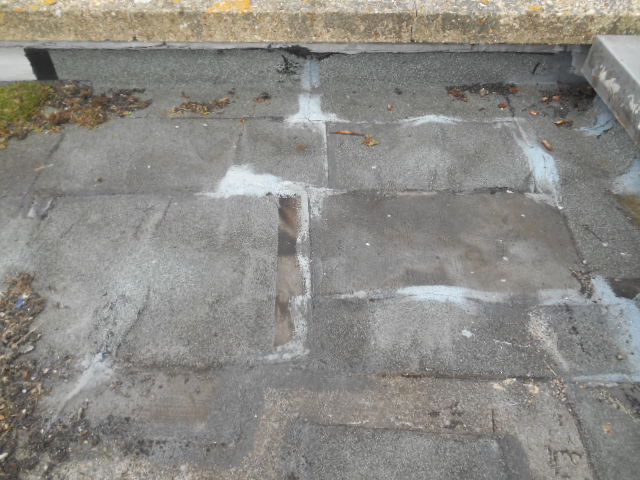Flat roofs are a popular choice for many homeowners and businesses, offering a sleek, modern look. However, they come with their own set of challenges, especially when it comes to leaks. Let’s explore the common causes of flat roof leaks and how to address them.

1. Aging Materials
Over time, all roofing materials degrade. Older flat roofs, particularly those installed in the 1960s and 1980s, may have outlived their expected lifespans. As these materials age, they become more susceptible to damage from UV rays, temperature fluctuations, and general wear and tear. This can lead to splits, blisters, and other vulnerabilities.
What to do:
- Regular Inspections: Schedule routine checks to assess the condition of your roof.
- Consider Replacement: If your roof is significantly aged and showing signs of deterioration, investing in a new roofing system might be the most cost-effective solution in the long run.

2. Installation Errors
The longevity and performance of a flat roof heavily depend on proper installation. Even high-quality materials can fail if not installed correctly. Issues like improper sealing, inadequate adhesion, or incorrect layering can lead to early failures.
What to do:
- Hire Qualified Professionals: Ensure that experienced and accredited contractors handle the installation.
- Verify Credentials: Check references and reviews to confirm the contractor’s expertise with flat roofing systems.

3. Poor Drainage and Water Pooling
Flat roofs are prone to water pooling, especially after heavy rainfall. Standing water can degrade roofing materials over time and add extra weight, potentially compromising the structural integrity of the roof.
What to do:
- Ensure Proper Slope: A slight slope of at least a quarter inch per foot helps direct water toward drainage points.
- Maintain Drainage Systems: Regularly clean and inspect gutters, downspouts, and internal drains to prevent blockages.

4. Damaged Flashing and Seals
Flashing and seals around roof penetrations, such as vents, skylights, and HVAC units, are critical for preventing water intrusion. Over time, these components can become loose, cracked, or corroded, creating entry points for water.
What to do:
- Regular Inspections: Check flashing and seals during routine maintenance.
- Prompt Repairs: Address any damage immediately to prevent leaks.
5. Blisters and Membrane Issues
Blisters form when pockets of air or moisture become trapped between layers of the roofing membrane. These blisters can expand and contract with temperature changes, eventually leading to ruptures and leaks.
What to do:
- Monitor for Blisters: During inspections, look for raised areas on the roof surface.
- Professional Assessment: Have a roofing expert evaluate the severity of blisters and recommend appropriate repairs.

6. Impact of Severe Weather
In regions with frequent rainfall, like the UK, flat roofs are continually exposed to moisture. This constant exposure can accelerate wear and tear, leading to leaks.
What to do:
- Weather-Resistant Materials: Use high-quality, weather-resistant materials during installation or repairs.
- Post-Storm Inspections: After severe weather, inspect the roof for damage and address any issues promptly.
7. Regular Maintenance: The Key to Longevity
Neglecting routine maintenance is a common cause of flat roof leaks. Regular upkeep helps identify potential problems before they become significant issues.
What to do:
- Scheduled Inspections: Conduct thorough inspections at least twice a year and after major weather events.
- Debris Removal: Keep the roof surface clear of leaves, branches, and other debris that can trap moisture.
- Professional Maintenance Plans: Consider enrolling in a maintenance program with a reputable roofing company to ensure consistent care.

By understanding these common causes of flat roof leaks and implementing proactive measures, you can extend the life of your roof and maintain a watertight barrier against the elements.
For a visual guide on preventing flat roof leaks, you might find this video helpful:

